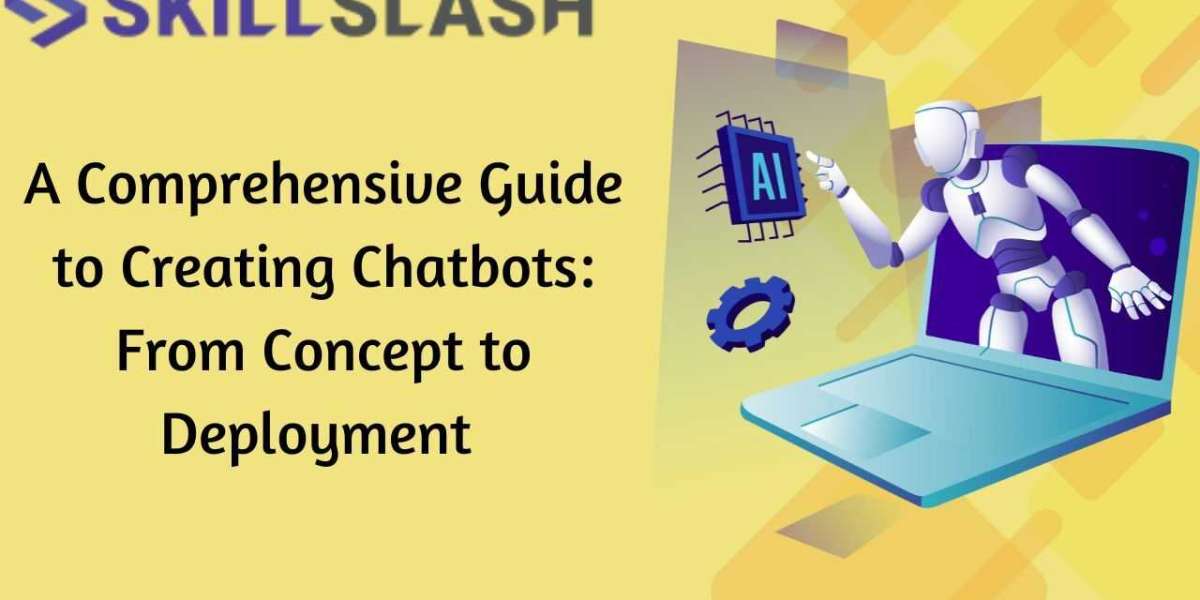Introduction
Chatbots have become an essential part of modern technology, making it easier for people to use different platforms. From customer service to a virtual assistant, chatbots have come a long way in providing quick and easy-to-use solutions. To create a successful chatbot, you need to plan ahead, design it, and get it up and running.
In this guide, we’ll show you how to create a chatbot from start to finish, that is from idea to deployment.
Here are the key steps to ponder about while creating a chatbot :
- Define Your Objectives
Before you get too deep into the technical stuff, it's important to figure out what your chatbot is all about. Ask yourself:
What's the main goal?
Who's your target audience?
What kind of issues or issues do you want your chatbot to solve?
Having clear goals will help you design your chatbot and make sure it meets your users' needs and expectations.
- Choose the Right Platform
Choosing the right platform to deploy your chatbot will depend on who you’re trying to reach and the context in which they’re being used. Some of the most popular platforms for chatbots include:
- Website Integration – Chatbots can easily be integrated into websites to provide real-time support and engagement
- Message Apps – Platforms such as Facebook Messenger and WhatsApp, as well as Slack, provide a wide range of channels for chatbots to be deployed on
- Voice Interface – Explore how your chatbot can be integrated with voice-powered devices such as Amazon Alexa and Google Assistant
- Select the Technology Stack
Selecting the appropriate technology stack is essential for your chatbot’s development and performance. Here are a few things to keep in mind:
- Use natural language processing (NLP) to help your chatbot understand and respond more naturally to user inputs.
- Train your chatbot with machine learning to make it smarter over time, helping it understand user intent better.
- Use an application programming interface (API) to integrate your chatbot with external services. For example, you could use an API for language translation or weather updates. You could also use an API for e-commerce functions.
- Design the Conversation Flow
A well-crafted conversation flow is essential for creating a user-friendly experience. To ensure this, consider the following strategies:
- Provide users with a straightforward onboarding process to familiarize them with the chatbot's features.
- Prepare the chatbot for various inputs and design it to handle them smoothly, requesting clarification when necessary.
- Provide a fallback mechanism in the event that the chatbot is unable to comprehend the user's input.
- Develop and Test
The development and testing of a chatbot begins with the coding of the logic, the integration of APIs, and the testing of the functionality of the chatbot. Here are the key development and testing steps for a chatbot:
- Create a prototype
The first step in the development process is to create a prototype of the chatbot’s interface and interactions. This allows you to get a feel for how the chatbot will work before moving on to the full-scale development process.
- User testing
The next step is to conduct extensive user testing. This is important because it allows you to identify any potential issues and get feedback on how to improve the chatbot.
You can use the iterative development approach to continuously improve the chatbot based on user feedback.
- Implement Security Measures
It is essential to maintain a high level of security, particularly when handling user data. Encryption protocols, secure authentication techniques, and regular security updates should be implemented to safeguard user data.
- Deploy and Monitor
Deploying your chatbot marks the transition from development to real-world interaction. Monitor its performance, gather analytics, and make continuous improvements:
- User Feedback: Encourage users to provide feedback and use it to enhance the chatbot's capabilities.
- Analytics: Monitor usage patterns, user satisfaction, and identify areas for optimization.
- Updates: Regularly update the chatbot with new features, improvements, and bug fixes.
Conclusion
Developing a chatbot is an iterative and dynamic process that necessitates a combination of technical knowledge, user-focused design, and continual improvement. This guide outlines the steps to ensure that your chatbot not only meets your goals, but also provides a rewarding and engaging experience for users. Additionally, it outlines how to remain adaptive, respond to user input, and stay up-to-date with the latest technologies to guarantee that your chatbot remains successful and pertinent in the ever-changing digital environment.








